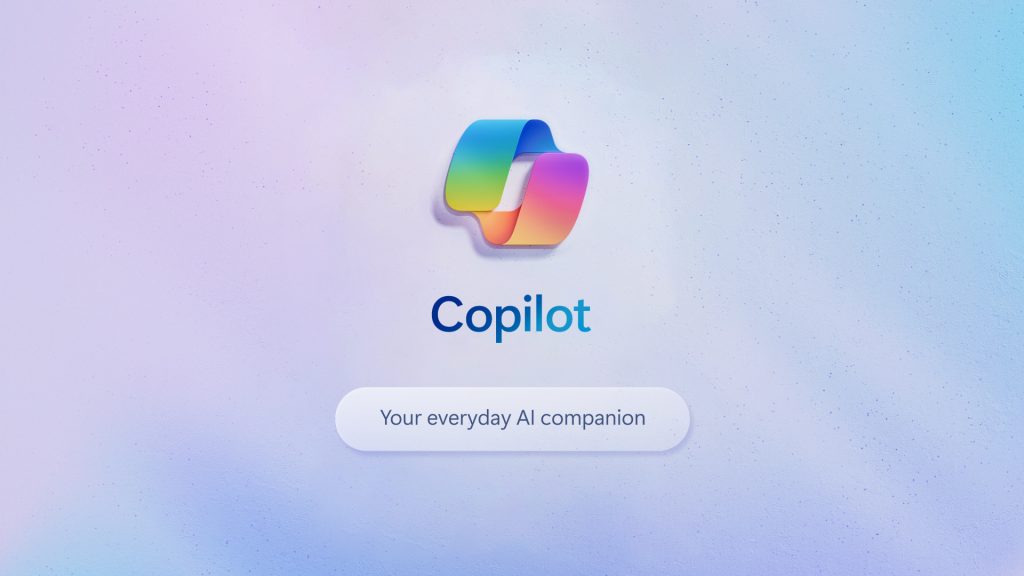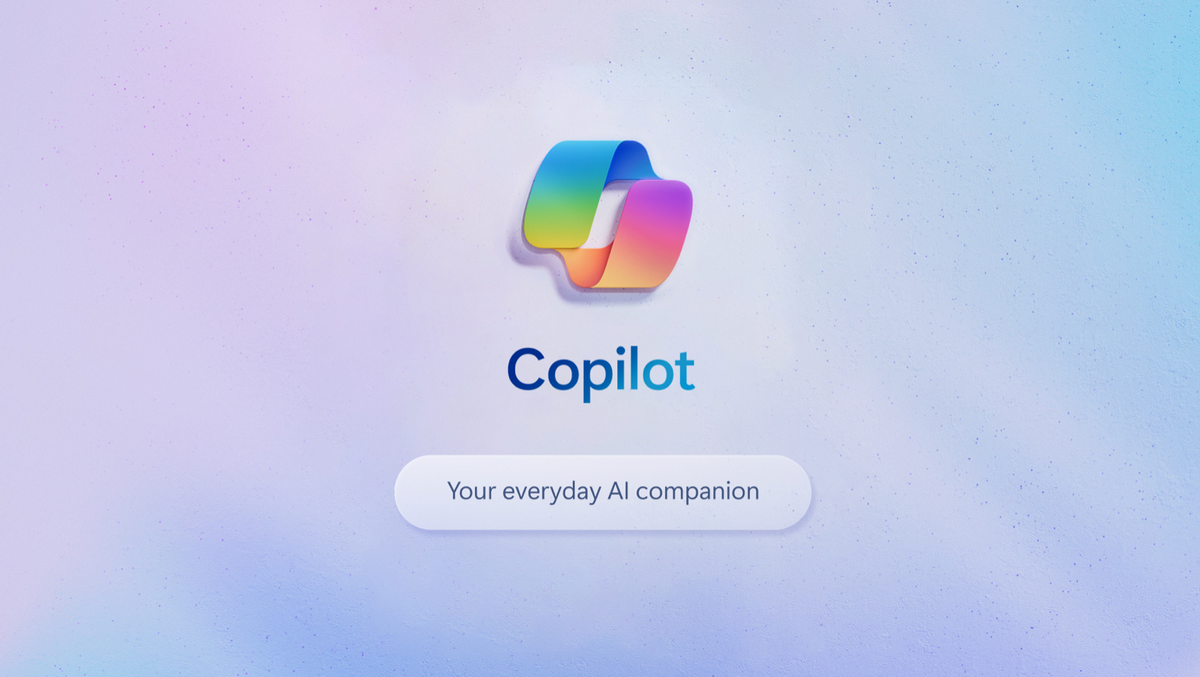Artificial intelligence fundamentally transforms how we interact with technology and get things done. Microsoft's new AI assistant, Copilot, is a major step forward in this transformation.
Microsoft Copilot makes AI accessible and useful in people's everyday lives by seamlessly integrating into the products and services they already use.
Here are some key points from Microsoft's Release Today:
- Microsoft its taking a unified approach to AI by bringing together strengths across the company to create Copilot. This includes expertise in productivity (Office 365), search (Bing), computing (Windows), and more.
- Copilot will provide helpful assistance in natural language across Microsoft's most popular applications and platforms. This includes Windows, Office 365, Bing, Edge, etc.
- Microsoft is responsibly developing Copilot using techniques like content credentials on AI-generated images. Privacy and security are priorities.
- The new Windows 11 update will integrate Copilot into the OS experience. Bing and Edge will also get AI upgrades like DALL-E integration.
- Microsoft 365 Copilot will transform productivity by assisting with tasks in Outlook, Word, Excel, etc. Microsoft 365 Chat takes it further as a personal AI assistant.
- New Surface devices provide the optimal platform for experiencing Microsoft's latest AI innovations. Their power and versatility support advanced AI capabilities.
- Ultimately, Copilot makes AI useful on an everyday basis. It brings together Microsoft's strengths to provide helpful, secure assistance across the platforms people already use. This unified approach aims to make AI a seamless aid.

AI as a Companion
One of the key promises of Copilot is its ability to serve as a personalized AI companion. Copilot aims to understand each user as an individual with unique needs, preferences, and context. This allows it to have more natural and informed interactions.
Personalized Interaction
Copilot can develop a greater awareness of user tendencies and habits over time. For example, if someone frequently asks about upcoming sports events in cities they are traveling to, Copilot can proactively notify them of games happening during an upcoming trip. It does not treat all users identically, but rather caters its responses and suggestions to individual circumstances.
Some of the ways Copilot provides personalized interactions include:
- Remembering personal preferences and history to give tailored responses
- Monitoring usage patterns to provide proactive, individualized recommendations
- Identifying relevant contextual information like upcoming travel plans to provide useful notifications
- Adapting the phrasing and depth of responses based on how much background knowledge the user has on a topic
- Pulling data from a user's calendar, emails, documents, and other sources to give personalized insights
The end goal is for Copilot to feel like an AI companion that understands you and can have fluid, natural conversations that go beyond just basic Q&A. Microsoft believes digital assistants should adapt to humans rather than the other way around. Copilot represents a major step forward in delivering on that vision.
Natural Language Understanding
A key advantage of Copilot is its ability to understand and respond to natural language. Users can communicate with it using normal conversational speech and do not need to learn special codes or commands. This makes interacting with Copilot highly intuitive and user-friendly.
Some ways Copilot accomplishes natural language understanding include:
- Advanced machine learning models that analyze sentence structure, grammar, and vocabulary to discern meaning
- Contextual awareness to interpret statements in light of the current conversation and environment
- Ability to identify user intent despite variation in phrasing and terminology
- Clarifying questions to better understand ambiguous or incomplete requests
- Continuous learning over time as Copilot encounters new linguistic patterns and usage
The natural language capabilities enhance accessibility for end users. Individuals do not need specialized technical knowledge to benefit from Copilot. Its conversational interface promotes engagement and makes Copilot seamless to interact with.
Moving forward, Microsoft plans to further improve Copilot's language processing skills. The goal is for it to handle even more complex dialog with increased accuracy. This includes understanding slang, irony, humor, and other nuances of human communication. Enhanced natural language understanding will only make Copilot more useful as a friendly, knowledgeable companion.
Seamless Integration
A key advantage of Copilot is its seamless integration across Microsoft's most popular platforms and services. This allows it to provide helpful AI assistance wherever users need it.
Across Microsoft Suite
Rather than being siloed in a single application, Copilot is built into multiple Microsoft offerings:
- Windows 11 will integrate Copilot directly into the operating system to assist with tasks
- Microsoft 365 will incorporate Copilot into Office apps like Outlook, Word, and Excel to boost productivity
- Bing will use Copilot to enhance search experiences with personalized results and conversational interaction
- Edge will offer Copilot-powered features like visual search and shopping assistance
This unified approach means Copilot's capabilities will be available across the Microsoft suite. Users can summon it at any time, whether working on documents, emails, spreadsheets, presentations or browsing the web.
The consistency of accessing Copilot in Microsoft's most common applications allows people to easily make it a regular part of their workflow. There's no need to switch between separate AI tools. Copilot meets users where they already are, providing aid across platforms.
Going forward, Microsoft plans to further expand Copilot's integration into additional services. The end goal is for Copilot to feel ubiquitous - available anytime, anywhere its assistance may be useful. With its broad integration, Microsoft is striving to make AI a fundamental aspect of how people interact with technology.
Contextual Assistance
Copilot sets itself apart by tapping into multiple sources of contextual intelligence to offer users timely, relevant assistance tailored to what they are trying to accomplish. It does not operate in a vacuum, but rather takes into account the user's circumstances and environment.
Some ways Copilot incorporates contextual information:
- Monitoring current PC activities to provide assistance optimized for the task at hand
- Accessing work documents and data to give individualized recommendations based on user projects
- Leveraging web knowledge and search history for more personalized responses
- Understanding time and location to provide suggestions suited to the moment
- Referencing previous conversations and interaction history to continue discussions naturally
This context-awareness allows Copilot to provide assistance proactively, without the user having to explicitly provide instructions each time. For example, if a user is searching for upcoming flights, Copilot can automatically monitor prices and notify them if any go down without needing to be asked.
Microsoft believes context is key for creating truly intelligent assistants. Copilot moves beyond canned responses by incorporating diverse sources of data to adapt its suggestions and answers to each situation. This finessed contextual support will only get smarter over time as Copilot continues learning user patterns.
Enhanced Productivity & Creativity
Copilot enables users to accomplish more and express themselves creatively through AI-enhanced applications. By incorporating artificial intelligence into popular Microsoft tools, Copilot makes completing complex tasks faster and simpler.
AI-Powered Applications
Microsoft is upgrading many of its apps with smart AI capabilities:
- Paint gains features like background removal and layers powered by AI. This simplifies editing images and creating digital art.
- Photos can now automatically blur backgrounds to highlight subjects. AI identifies the background and foreground objects.
- Excel includes capabilities like formula suggestions to help users analyze data more efficiently.
- Outlook provides intelligent email organization and meeting scheduling assistance.
- Whiteboard facilitates collaborative brainstorming with AI-driven idea clustering.
The integration of AI removes tedious manual work in many cases. For example, tedious layering tasks in graphic design can now be done with a single click through background removal. This gives users time back to focus on more meaningful work.
Additionally, the AI enhancements spark creativity by making producing original content fast and fluid. Users can quickly generate images, videos, and designs using AI guidance and then customize them. The technology eliminates barriers to creation and iteration.
According to Microsoft, this blend of accelerated productivity and amplified creativity will only expand as Copilot makes more apps and services AI-aware. The goal is for artificial intelligence to disappear into the background, making users feel empowered without even realizing the AI at play.
Innovative Features
Copilot incorporates leading-edge AI capabilities that empower people to channel their creativity in new ways. Microsoft is debuting innovative features like auto-compose in Clipchamp and generative AI in Designer.

Some examples of pioneering creative features include:
- Auto compose in Clipchamp uses AI to automatically create video edits, scene arrangements, and narratives based on provided visual content. This makes editing polished, professional videos easy.
- Designer leverages generative AI to transform text prompts into unique images. Users can quickly generate custom graphics to enhance documents and projects.
- Image Creator in Bing taps the latest AI research from DALL-E to produce one-of-a-kind images using natural language descriptions.
- Generative features in Designer like image expansion, filling in missing areas of a photo, and object removal enable new ways of editing images.
- Clipchamp's autocaptions automatically add polished text overlays to videos to save editing time.
According to Microsoft, these cutting-edge generative AI capabilities open new creative frontiers. Previously, producing high-quality graphics, videos, and images required technical skill. But Copilot's features simplify these tasks with the power of AI.
Microsoft plans to build on this innovative foundation by pursuing new advances in generative AI. The goal is to turn Copilot into an imaginative muse - capable of sparking ideas and accelerating all aspects of creative production and editing. This provides a glimpse into the creative potential of AI.
Harnessing DALL-E 3
To provide leading-edge AI capabilities in Copilot, Microsoft is incorporating model innovations like DALL-E 3 from AI research laboratory OpenAI. DALL-E 3 represents a major advance in generative AI.
DALL-E 3 builds off prior DALL-E versions in its ability to generate realistic images and art from natural language descriptions. However, enhancements in 3 enable producing more coherent and higher fidelity results.
Some of the improvements include:
- Increased understanding of fine details in language for more accurate rendering
- Better ability to handle ambiguities in textual prompts
- Enhanced quality and resolution of generated images
- More photorealistic capability in depicting people and clothing
- Streamlined object removal and outlining compared to previous iterations
Microsoft is integrating DALL-E 3 into Copilot experiences like Bing Image Creator to push boundaries of what's possible in image generation. The advanced model unlocks new levels of speed, quality, and creativity for users.
However, risks exist around harmful misuse of generative models like DALL-E 3. That's why Microsoft implements mitigations like Content Credentials that digitally watermark AI images to certify their origin.
Overall, selectively tapping innovations like DALL-E 3 in a responsible way allows Microsoft to deliver leading-edge assistance with Copilot. But human oversight remains critical to steer these powerful models towards helpful, creative ends that earn user trust.
Security & Privacy
As an AI assistant with access to sensitive user data, building trust through privacy protection and content integrity is critical for Copilot. Microsoft is taking a user-centric approach to security and implementing innovative safeguards.
User-Centric Approach
Copilot has been designed from the ground up with privacy in mind:
- Users remain in control over what personal data the AI can access
- Strong data encryption prevents unauthorized access to user information
- AI assistance happens on-device when possible to avoid cloud processing
- Clear explanations of how data is used and ability to delete it anytime
Microsoft states transparency around Copilot's privacy practices is a priority. The goal is for users to feel comfortable entrusting the AI with their information knowing it is secured and respected.
Content Credentials
To protect the integrity of AI-generated content, Copilot introduces Content Credentials. This adds invisible digital watermarks to items like images created by Copilot. The watermarks encode data like when and where the content was originally produced.
This provides a way to audit AI content and check it has not been altered or misrepresented. Users can verify the origin of AI creations. For technologies like generative image creation that carry risk of misuse, Content Credentials offer an important safeguard.
Microsoft's multilayered approach to security and commitment to privacy by design helps build trust in Copilot. Through technical protections and responsible design, Microsoft aims to earn users' confidence to interact with Copilot worry-free.
Unanswered Questions Still Remain
How does Microsoft Copilot ensure the balance between personalized interaction and user privacy? Is there a risk of over-personalization leading to privacy concerns?
Striking a balance between personalization and privacy is crucial in the age of AI. Over-personalization can lead to users feeling their privacy is invaded, raising concerns about data misuse. It would be insightful to know the mechanisms Microsoft has in place to safeguard user data while providing personalized experiences. Additionally, understanding how users can control the level of personalization and what data Copilot accesses is essential.
With the advancement of natural language understanding, how does Microsoft plan to address potential misinterpretations and biases in Copilot’s responses?
Natural language understanding, while advanced, is not infallible. Misinterpretations can lead to misinformation, and inherent biases in the system can perpetuate stereotypes. Discussing Microsoft’s approach to mitigating these risks and ensuring Copilot’s responses are accurate, unbiased, and culturally sensitive is vital for responsible AI development and deployment.
Given the wide integration across Microsoft’s suite, how does the company plan to address potential compatibility issues with third-party applications and platforms?
Seamless integration across various platforms is a commendable feat, but the digital ecosystem is vast and diverse. Understanding how Microsoft plans to ensure Copilot’s compatibility with third-party applications and platforms is crucial for users who rely on a mix of software solutions. Addressing this question can shed light on Microsoft’s collaboration with other tech companies and its commitment to interoperability.
How does Copilot’s contextual assistance differentiate between professional and personal contexts to avoid inappropriate suggestions or breaches of privacy?
Contextual assistance that blurs the line between professional and personal realms can lead to ethical dilemmas. It is important to explore how Copilot discerns between different contexts and what safeguards are in place to prevent inappropriate suggestions or privacy breaches. This discussion can reveal the depth of Copilot’s contextual understanding and its ethical considerations.
While AI-powered applications like Paint and Photos are being enhanced, how does Microsoft ensure that the creative integrity of users is maintained and not overly influenced by AI suggestions?
AI enhancements can significantly aid creativity, but there’s a fine line between assistance and influence. Delving into how Microsoft preserves the creative integrity of users and ensures that AI suggestions do not overshadow individual creativity is essential. This exploration can provide insights into Microsoft’s philosophy on the role of AI in creative processes.
With the introduction of innovative features like auto-compose and generative AI, is there a risk of diminishing the value of human creativity and originality in content creation?
The advent of generative AI raises questions about the value of human creativity. Discussing whether these features might lead to a reliance on AI for creative content and potentially diminish the appreciation for human originality is a conversation worth having. It touches on the broader implications of AI on human skills and artistic expression.
Given the emphasis on user privacy and data security, how transparent is Microsoft about the data Copilot collects, and how is this data being used or stored?
Transparency in data collection, usage, and storage is a cornerstone of user trust. Investigating Microsoft’s transparency practices regarding Copilot’s data handling can provide users with a clearer picture of their digital footprint and how their information is safeguarded.
The introduction of Content Credentials is innovative, but how foolproof is this system against potential manipulations or forgeries of AI-generated content?
While Content Credentials aim to ensure the authenticity of AI-generated content, the system’s robustness against manipulations and forgeries is a valid concern. Discussing the security measures in place and the potential scenarios where the system might be challenged can help assess the reliability of this feature.
How does Microsoft envision the long-term impact of Copilot on the workforce, particularly in terms of job displacement due to automation and AI?
The integration of advanced AI like Copilot in the workplace inevitably sparks discussions about job displacement and the future of work. Understanding Microsoft’s vision for Copilot’s role in the workforce and how the company anticipates addressing potential job displacement is crucial for assessing the socio-economic impact of this technology.
With Copilot being a step towards more advanced AI, how is Microsoft addressing ethical considerations and potential unintended consequences of such technology on society?
The ethical ramifications of advanced AI are vast and multifaceted. Exploring how Microsoft is navigating ethical considerations, addressing potential unintended consequences, and ensuring responsible AI development and deployment is essential for evaluating the company’s commitment to ethical technology and its impact on society.








